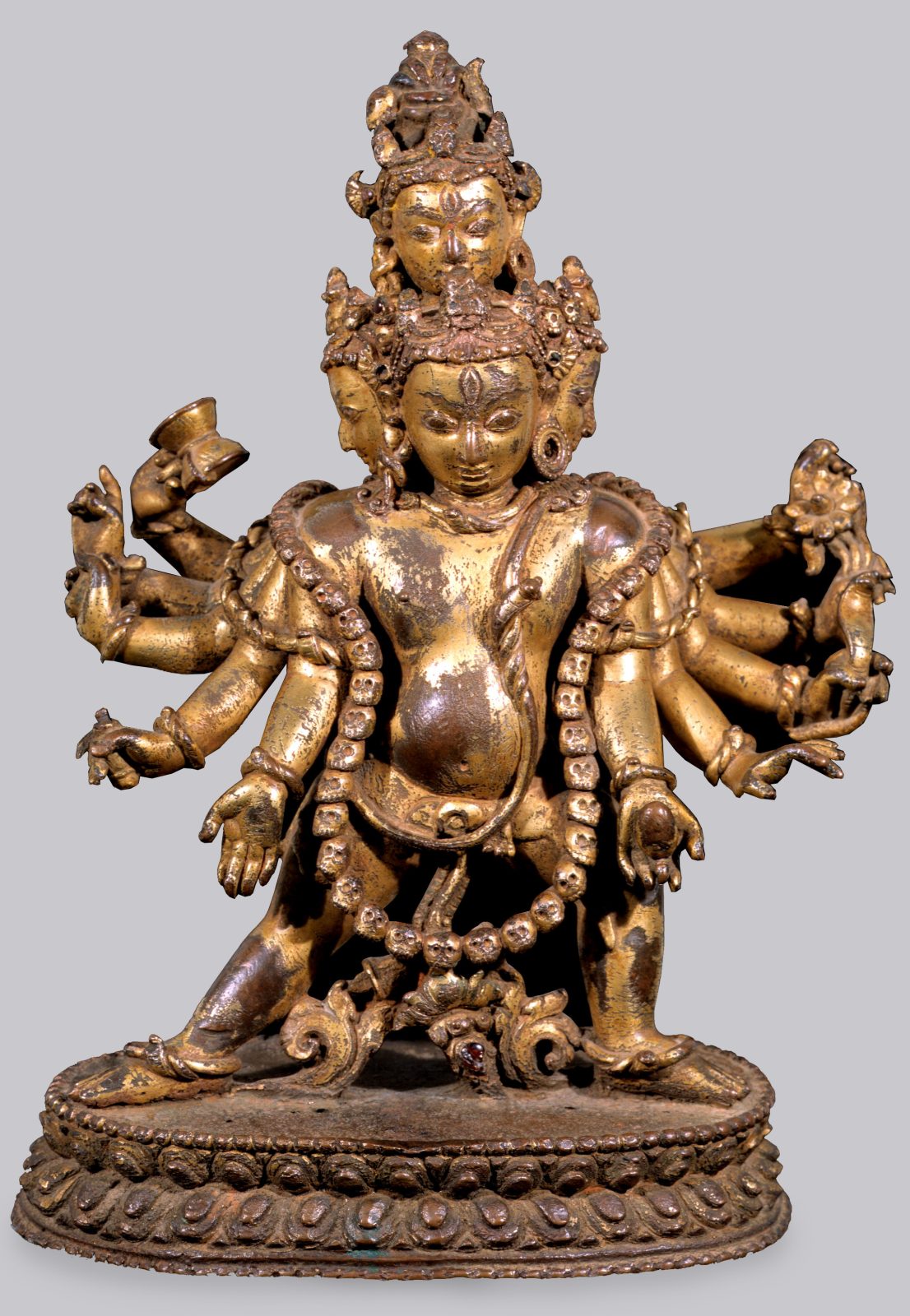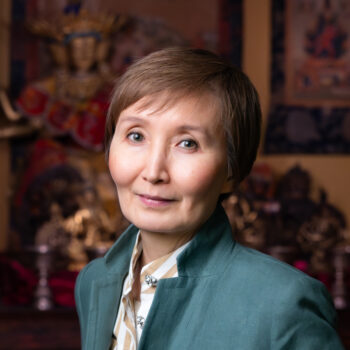
Bodhisattva Avalokiteshvara; Nepal; 13th - 14th century; Gilt copper alloy with semiprecious stone inlay; Rubin Museum of Himalayan Art; C2005.16.8

Bodhisattva Avalokiteshvara; Nepal; 13th - 14th century; Gilt copper alloy with semiprecious stone inlay; Rubin Museum of Himalayan Art; C2005.16.8
Elena Pakhoutova: Yes, the 14th-century sculpture of Bodhisattva Avalokiteshvara. When I look at this image I think of Nepal. This form of Avalokiteshvara is one of the most popular in Nepalese culture. This sculpture itself displays most recognizable characteristics of Nepalese art of that time evident in the figure’s graceful stance and elegant proportions, typical rendering of the face with a slightly hooked nose, and simple but detailed adornments and ornaments.
Nepal is known for its exceptional tradition of creating sculpture in metal and wood, as well as traditional painting on cloth, called pauba. Popular art forms in Nepal also include arts of performance, such as music and dance. Nepal has many festivals in which communities come together to celebrate important seasonal changes that affect their daily lives and traditionally everyone would participate in them in any capacity they are able. These festivals include Gai Jatra, an annual event honoring those who passed away during the year.

Bhairava; Nepal; 13th or 14th century; Copper alloy with inlays of semiprecious stones; Rubin Museum of Himalayan Art; C2003.33.1
Nepalese artists were famous for their metal sculptures, which they created and still create in repoussé and cast metal, often gilded. The technology of making such sculptures of different scales was not unique to Nepal, but Nepalese artists developed exceptional skills in both and were the main sources for producing images for local commissions and abroad, most notably for Tibetan as well Chinese patrons.

Mandala of Chakrasamvara; Nepal; 19th century; Pigments on cloth; Rubin Museum of Art Gift of Shelley and Donald Rubin C2006.66.44
The most famous center of artistic production is the Kathmandu Valley and the three cities of Bhaktaphur, Patan, and Kathmandu that used to be city states in ancient times but now are part of a larger urban area in the valley, somewhat similar to the boroughs of New York.

Elena Pakhoutova is senior curator, Himalayan art, at the Rubin Museum of Himalayan Art and holds a PhD in Asian art history from the University of Virginia. She has curated several exhibitions at the Rubin, including Death Is Not the End (2023), The Power of Intention: Reinventing the (Prayer) Wheel (2019), and The Second Buddha: Master of Time (2018). More →
Get the latest news and stories from the Rubin, plus occasional information on how to support our work.